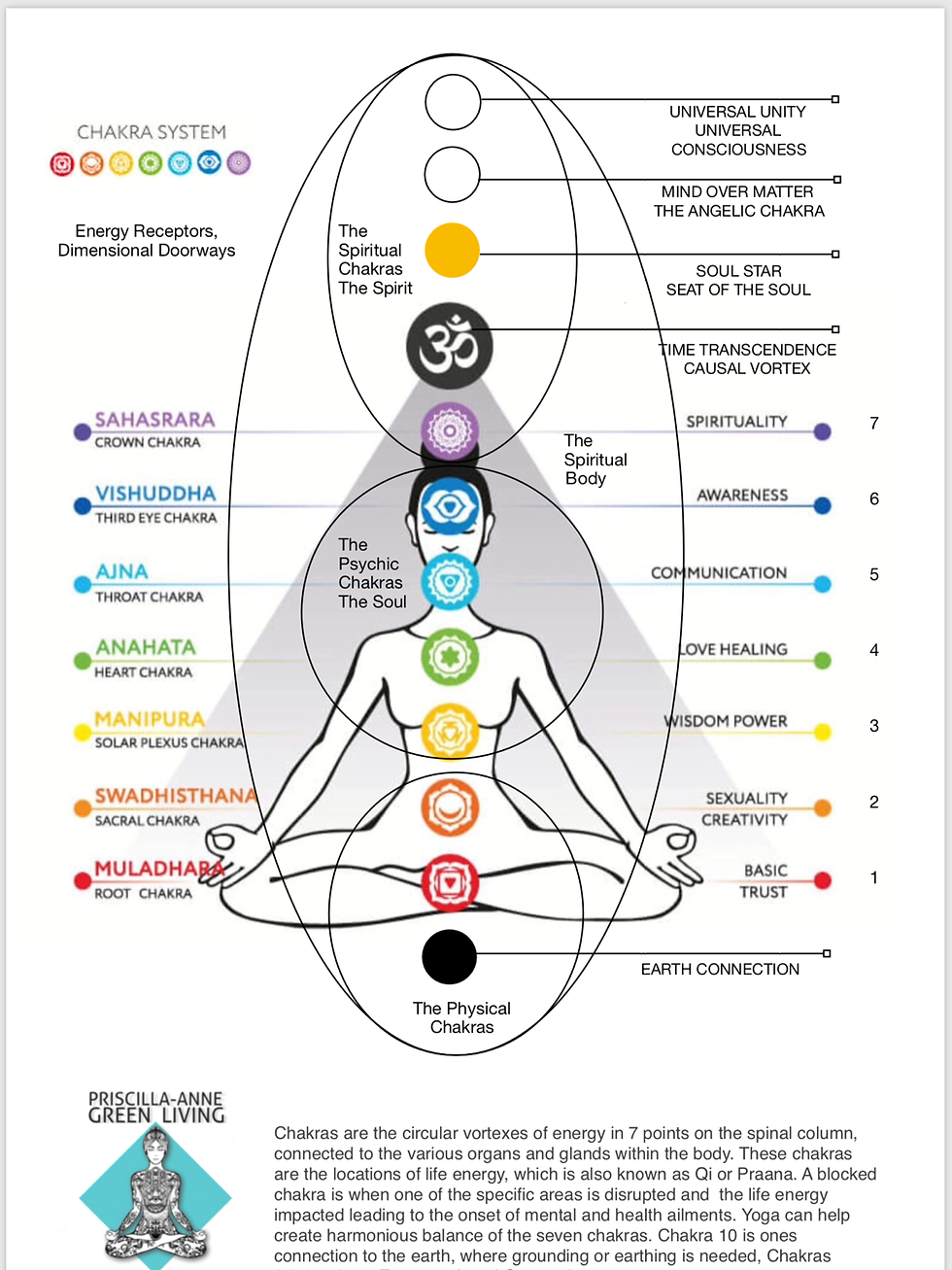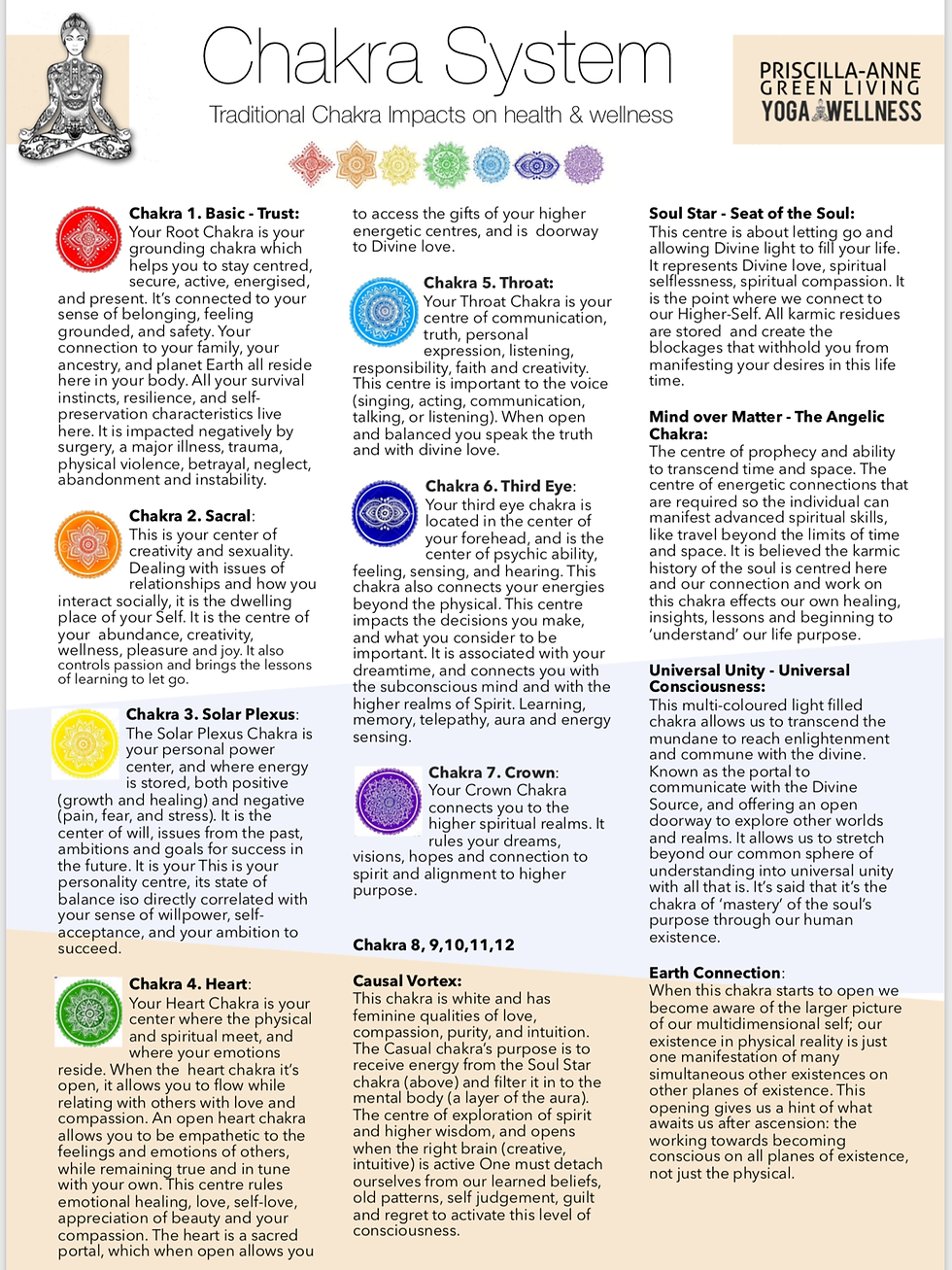Chakra Energy Centres and Yoga practice
- Lily
- Jun 4, 2020
- 4 min read


Chakras? What are they? How can they assist with wellness through yogic practice and lifestyle? The 8 Limbs of Yoga (see diagram for authentic Yoga Lifestyle description below) describes the various yoga lifestyle components within yoga philosophy including yoga postures as taught conventionally, which are only the asanas, one small element of the physical wellness practice in yoga).

We hear the term Chakras all the time particularly in yoga or meditation classes however rationalising how ancient Sanskrit text authors devised such a complex sequence of energy centres in the human body is met with often sceptical contemplation.
As a yoga practitioner I like to guide my students to reflect upon the Chakra centres in their yoga practice and mindfully practice ‘intentional’ yoga with a focus on addressing various physical, mental and spiritual ills, imbalances and blocks. The Chakras have a foundation both in physiological recognition but also via individual metaphysical experience. My yoga master Georg Feuerstein describes the Chakras in these terms “Early Upanishads of Hinduism mention cakrain the sense of "psychospiritual vortices", along with other terms found in tantra: pranaor vayu(life energy) along with nadi(energy carrying arteries).” Hence working with these energy flows is vital to effective yoga practice.

Hindu and Buddhist texts mention Chakras as being arranged in a column along the spinal cord, from its base to the top of the head, connected by vertical channels. The tantric traditions sought to master them, awaken and energise them through various breathing exercises or with assistance of a teacher. These chakras were also symbolically mapped to specific human physiological capacity, sounds, subtle elements (tanmatra), in some cases deities, colors and other motifs. Belief in the chakra system of Hinduism and Buddhism differs from the historic Chinese system of meridians in acupuncture where in Yoga the chakrarelates to subtle body, wherein it has a position but no definite nervous node or precise physical connection. The tantric systems envision it as continually present and a means to psychic and emotional energy and yogic rituals and meditative practices focus on a discovery of radiant inner energy (pranaflows) and mind-body connections.often each Chakra focus is aided in meditation By specific Chakra symbology, mantras, diagrams, models (deity) and mandalas. The practitioner proceeds step by step from perceptible models, to increasingly abstract models where symbolism and external mandala are abandoned, inner self and internal mandalas are awakened.
Author Trish O’Sullivan explains in the Encyclopedia of Psychology and Religionthat ‘The term chakra (in Sanskrit cakra) comes from the Hindu/Yoga tradition and is a Sanskrit term meaning wheel or mystical circle. The term refers to psychoenergetic centers in the subtle or nonphysical human body (lingadeha) discovered in ancient India. The chakras are believed to move in a circular manner and funnel universal energy into the human energy system. References are made in the ancient (ca. seventh Century bce) Upanishads to an esoteric human anatomy composed of subtle life energy or prana.’ She concludes ‘This anatomy is comprised of channels along which subtle energy travels.’
The chakras or energy centers according to Maitri Upanishadmentions the Sushumnachannel which is central to the Kundalini Yogaphilosophy and practice as are the chakras. The Upanishads also describe five elements we often also associate with metaphysical energy and wellness – earth, water, fire, air and ether associated with this subtle body.
According to researcher and author of the academic paper ‘The physiological Foundation of Yoga Chakra Expression’, Richard W. Maxwell, “Chakras are a basic concept of yoga but typically are ignored by scientific research on yoga, probably because descriptions of chakras can appear like a fanciful mythology. Chakras are commonly considered to be centers of concentrated metaphysical energy. Although clear physiological effects exist for yoga practices, no explanation of how chakras influence physiological function has been broadly accepted either in the scientific community or among yoga scholars. This problem is exacerbated by the fact that yoga is based on subjective experience, and practitioners often shun objective descriptions.” In his essay he ‘builds on earlier work hypothesizing that intercellular gap junction connections provide a physiological mechanism underlying subtle energy systems described in yoga as well as other disciplines such as acupuncture. Three physical aspects of chakras are distinguished that are integrated through gap junction mechanisms and are proposed to have arisen during embryological development. Furthermore, electrical conductance associated with a high concentration of gap junctions could generate phenomena that, when subjectively experienced, have the radiant qualities attributed to chakras. This theory provides a scientific rationale for previously unexplained details of chakra theory and offers a new orientation to conceptualizing and studying such subjective phenomena’.
The advent of new technologies have enabled us to monitor and track energy flow through the body and the shift of phenomenon such as heat, vibration, frequency and energy can now support subtle energy flow recognition. These days ‘science’ and ancient 5000 plus year old ‘Sanskrit texts’ synergise into better informed yogic practice around the use of Chakra energy centres. Therefore we can integrate a greater focus on Chakra energy healing into various aspects of our yoga philosophy practice such as yogic asanas postures, meditation, Dharana (focus and concentration), Pranayama (breathing and control of vital energy) and Niyamas (in this context ‘Treatment of oneself’).
Developing reflective practice of any kind with intention is the path to self improvement and development of consciousness and awareness, Chakras can help provide a road map to internal energy pathways, without which external and higher energy balancing can’t be achieved.







Comments